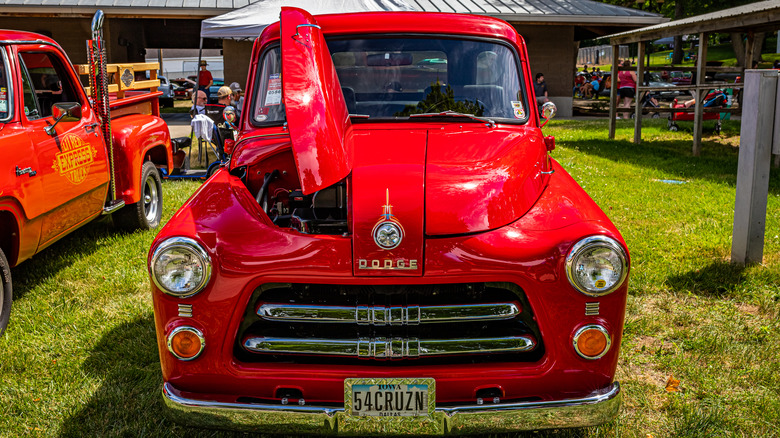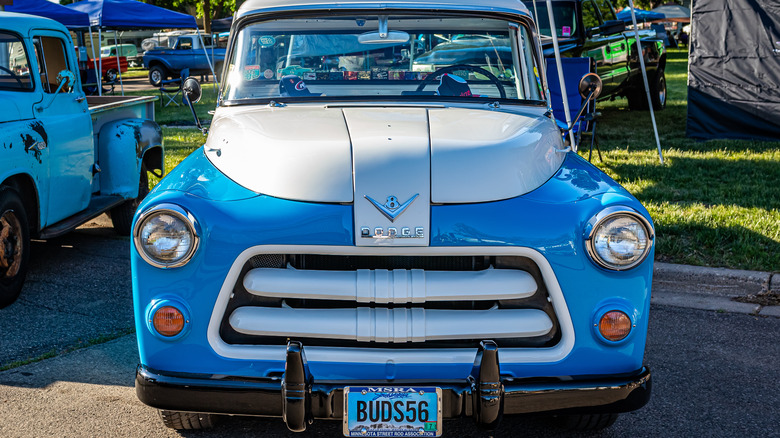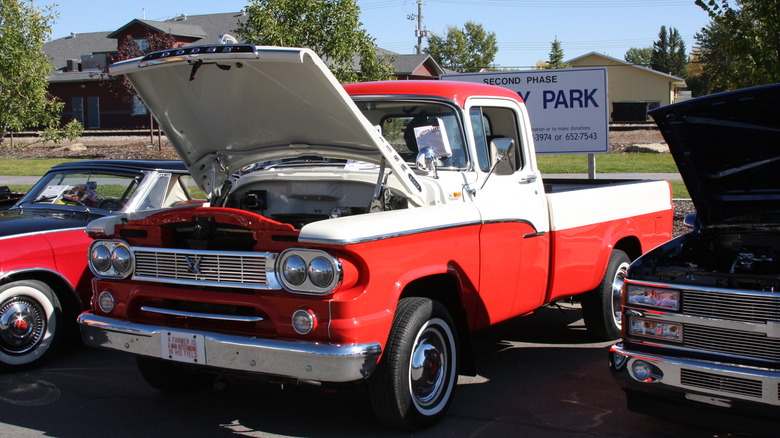Everything Dodge Fans Should Know About C-Series Trucks
PIckup trucks are a huge segment of the automotive industry, accounting for 10.9 million of the 13.75 million passenger vehicles sold last year in the United States, according to Statista. For several generations, the Ford F series has been the most popular truck — and most popular vehicle — in America, with just over 750,000 sold. Ram trucks are a respectable third place in the market, selling just under 450,000 units in 2023. Ram began its life as a model name at Dodge; Chrysler dropped the Dodge half of the label and began badging its truck line as simply Ram trucks in 2009.
The Dodge brothers got their start in 1903, building transmissions for Ransom Olds — he of Oldsmobile — and supplying engines for the American military effort against Pancho Villa. The Dodges built their first vehicle, a steel-bodied touring car, in 1914. Commercial vehicles followed a few years later, including a panel van and an ambulance. Chrysler bought Dodge in 1928, and five years later the familiar Ram's head hood ornament appeared. Dodge introduced the Power Wagon, America's first 4WD truck in 1946. That truck that evolved into the more driver-friendly B-series Pilot-House line in 1948 Pilot-House line in 1948. Dodge updated their trucks once again, introducing the C-series for the 1954 model year.
The C series was updated several times during its short life
The C-series was a significant update from its predecessor, with a one-piece floor that allowed the cab to sit closer to the road surface. The front clip end was also lowered and redesigned to incorporate a split hood and two-bar horizontal grille. The standard engine was a flathead six-cylinder, but with the new series designation, a 241 cubic inch V8 was made available as an option.
In the spring of 1955, the C-1 became the C-3 and a 260 cubic inch V8 was added to the roster of available engines. The C-3 was available in four trim levels: Standard, DeLuxe, Custom, and Custom Regal. In May of 1956 some design changes were made, and the V8 grew by 10 cubic inches. The electrical system was also converted from six to 12 volts that year.
More changes came in 1957, including the premiere of the Sweptside bed style, a 315 cubic-inch V8, and a new pushbutton three-speed automatic transmission.
1958-60 C pickups have four headlights
For 1958, the front end was revamped to include a once-piece hood and four-headlight layout, and a four-wheel drive version with Spicer 70 axles and a 10,000 pound gross weight rating hit the roads. The Sweptside body style was replaced by the Sweptline in 1959, and the lineage of the C series started to dovetail in the following years. Dodge introduced the D-series in 1961, and the C-series was rolled into the larger LCF (low cab forward) line, with cabs designed and built by the Checker taxicab company.
Chrysler began providing Dodge C-series cabs to Studebaker in 1960, which put its own engines in what would become the Champ line. Dodge's parent company also sold Checker-built C-series bodies to the Four Wheel Drive Auto Company, or FWD.
Although examples aren't necessarily hard to find today, the classic styling of the C-series and durability of the powertrain and chassis make it a desirable commodity for collectors. Meticulously restored survivors can fetch more than $80,000.
[Featured Image by dave_7 via Wikimedia Commons|Cropped and scaled|CC-By2.0]


